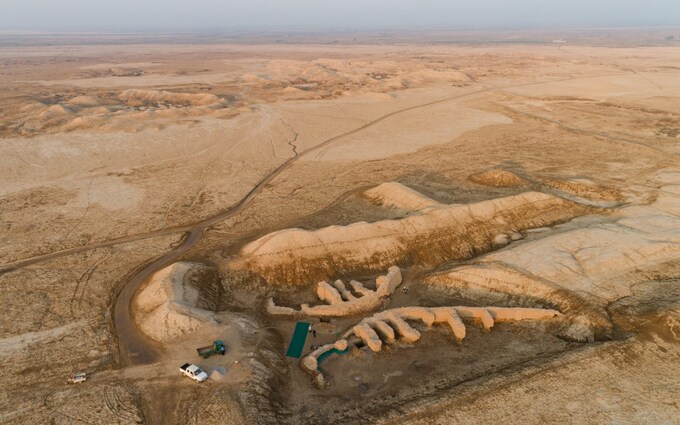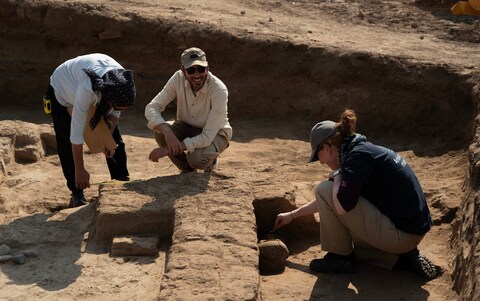Ancient Sumerians invented a “civilisation-saving” water channel 4,000 years ago, a British Museum dig has revealed.
Archaeologists working at the ruined city of Girsu in Iraq have discovered the true function of a mysterious structure created by the civilisation.
The inhabitants of the ancient city created a device known as a “flume” to propel water to distant locations where it was needed, thousands of years before this technology was thought to have been discovered.
The Sumerians, who were the first people to tell early versions of the biblical story of the flood, appeared to have devised this “anti-drought machine” in an effort to preserve a way of life threatened by vital canals drying up.
Dr Ebro Toruń, an architect and conservationist working with the British Museum team in Iraq, said: “This is absolutely one of a kind. There is no other example of it in history, really, until the present day.”
Dr Sebastien Rey, an archaeologist and the project’s leader in Iraq, explained: “They are struggling for one thing and that is water. All of the texts tell us about the crisis.”
He added: “It is not just a bridge, it’s an anti-drought machine, anti-collapse.
“The canals are drying up, silting up, one by one. This is one last desperate attempt to save themselves. The monumental scale of the structure shows how important this project was to them. It is a civilisation-saving effort.”
Dr Rey spoke between bounds across the spoil heaps of past excavations in the pre-dawn twilight, before the merciless sun of the Iraqi autumn makes work unbearable for the British Museum team and the 40-strong cohort of villagers digging through 4,000 years of dust.
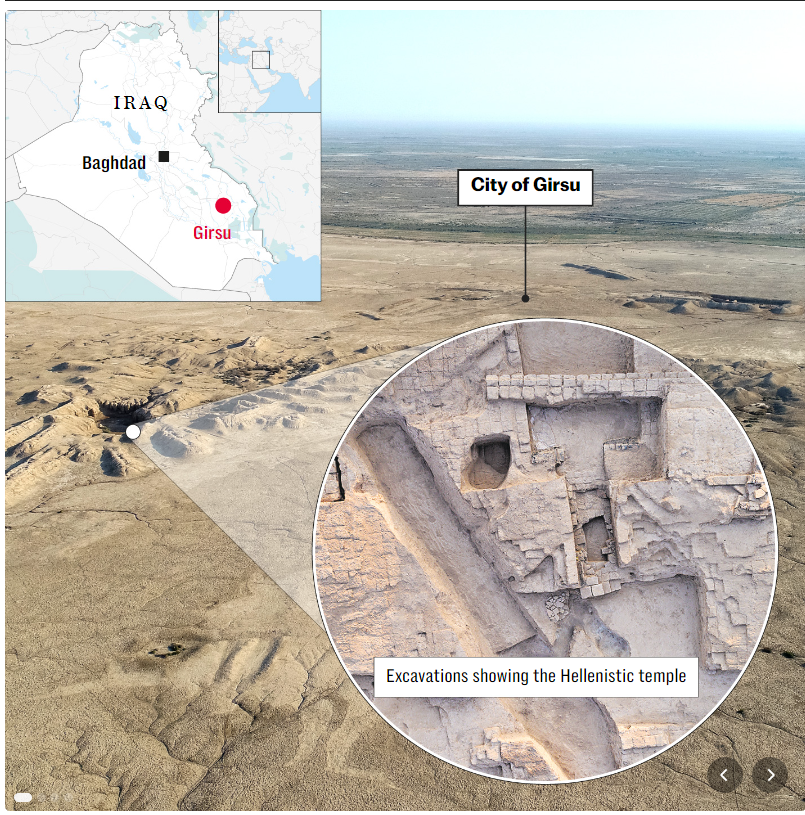
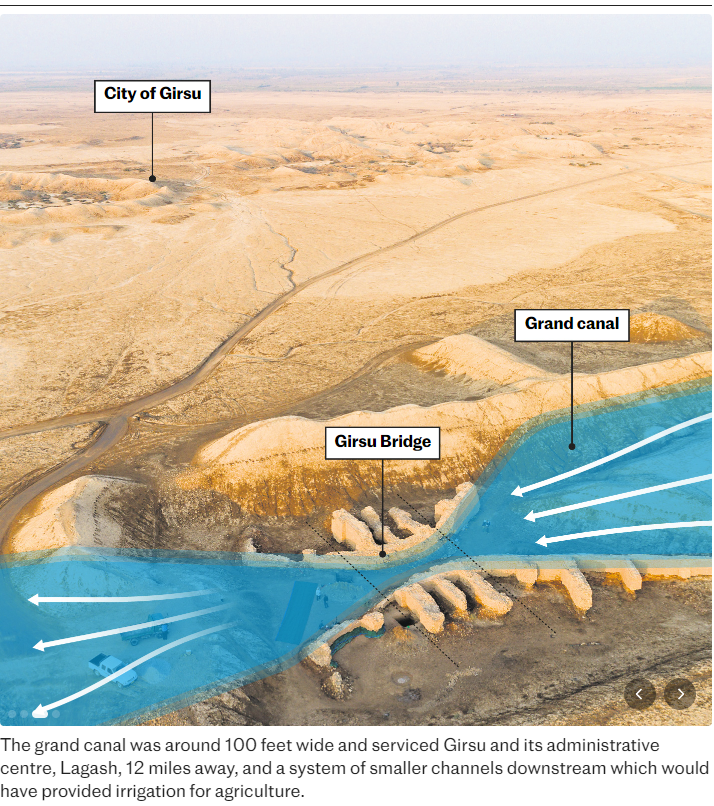
The team is based in the region once known as Sumer, which gave rise to the world’s first civilization.
In the great Sumerian poem the Epic of Gilgamesh, in which a king seeks immortality from a man who spared mankind from a deadly deluge with a giant boat, the Sumerians also first told the flood story that became the Biblical story of Noah.
Their civilisation revolved around water and depended on advanced irrigation that directed water from the Tigris and Euphrates rivers into canals that watered fields providing the food necessary to support urban life.
According to ancient writings, it was part of an order maintained by gods who in turn were maintained by sacrifice and libations, but when the gods abandoned Girsu, the Sumerians were forced to effect their own salvation.
The device deployed to preserve their way of life is formed of two symmetrical mud-brick structures about 130 feet long, 33 feet wide and with 11-foot-high walls arranged in two opposing curves bending outwards.
It dwarfs the workmen in keffiyeh who straddle the structure, working to shore it up with soft river clay now used as a cheap material by local farmers as it once was by the Sumerians.
The twin buildings appeared so purposeless to archaeologists in the 1920s that the site was simply named “the enigmatic structure”, with more daring theories suggesting that it might have been a bizarrely arranged temple.
Quartered in the concrete compound in the village of Nasr, experts working on the British Museum’s ongoing Girsu Project, which is funded by Getty, have flown drone flights and tested the soil to establish that the mysterious construction once straddled a 12-mile canal, proving it to be the world’s oldest known bridge.
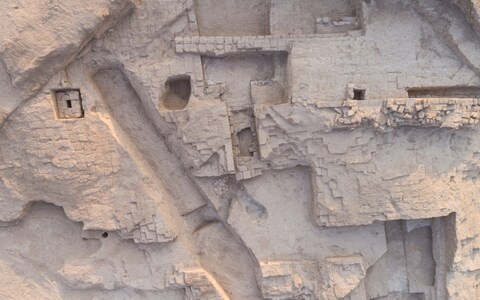
The latest research conducted in this remote corner of Iraq, its least populated province, have now revealed that the structure that channelled a 100-foot-wide canal into a 13-foot-wide passage would have created a feature known as the “Venturi” effect, something that would not be theorised by scientists until the late 18th century.
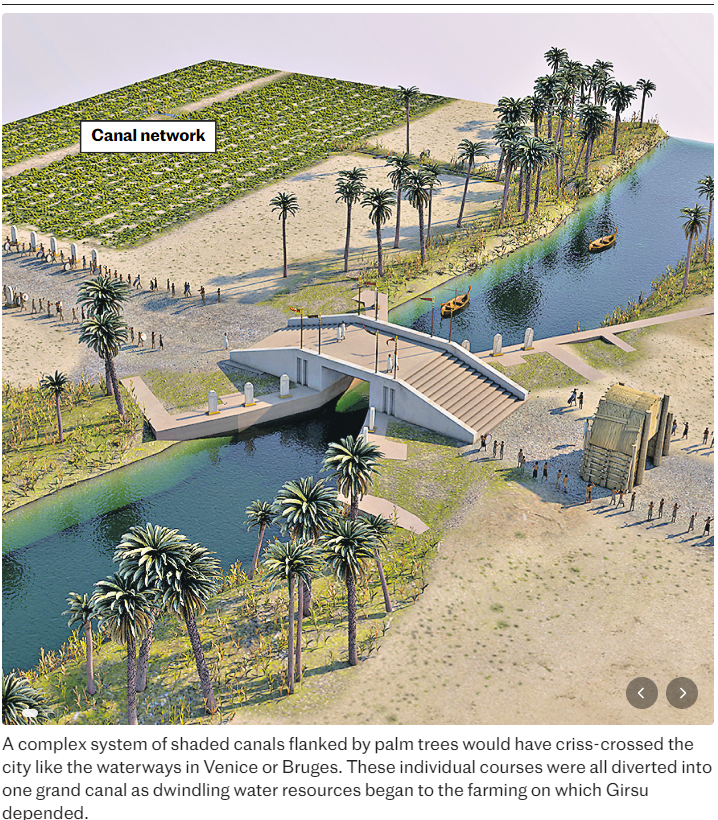
It refers to the increase in velocity of liquids as they pass through a constricted “throat”, and can be put into practice with structures known as “Venturi flumes”.
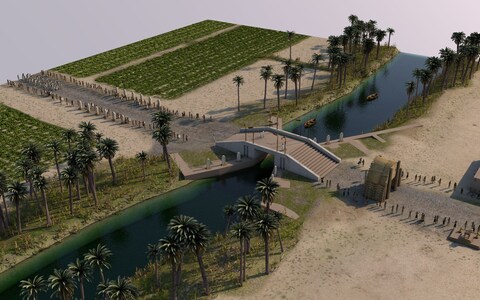
The Girsu structure is one such flume, which would have accelerated water flow and forced the water to more distant locations downstream where it was needed, including the neighbouring administrative capital of Lagash.
In modern-day Girsu, the only signs of water are the scars of desiccated wadis cut into the yellow dust, the remains of homes, temples and palace walls reduced by time and the desert rains first to slurry, then powder.
It is believed the structure was built by the final generations living in Girsu in a last attempt to save their home from becoming unlivable.
Their desperation is revealed by archaeological evidence, which shows that they redirected all water courses into a single canal and through the device to maximise flow.
The great temple to the warrior god Ningirsu, whose outline still sits high above the Mesopotamian floodplain, and the palace gradually unearthed with each journey of workman’s wheelbarrow would have been familiar to the ancients.
But, according to Dr Toruń, the flume bridge is something entirely and excitingly new.
“When you do this to water it’s going to go further, it’s going to accelerate. They knew all the key factors, they knew what they were doing.
“We have not seen any other example of this in ancient Mesopotamia. If you look at the walls of the bridge, they are inclined outwards. This further increases flow, but no one knew this, as far as we know, until the 20th century.”
The Girsu flume even has a “sharp drop” at its centre, a feature present in modern flumes that would have better facilitated the Venturi effect and which the Sumerians appear to have been aware of.
There is evidence that the structure was built on a previous construction that followed the same design, suggesting that water-accelerating technology was known to the Sumerians millennia before it was thought to have been created.
The shifting climate and changing river courses in Mesopotamia in the second millennium BC were too powerful to be held back by Sumerian ingenuity, however.
In the temple complex, a band of white can be seen in the soil layers made up of deconsecrating ash that Sumerians scattered in the holy places that they believed had been abandoned by the gods, marking the point in 1750 BC when the inhabitants of Girsu abandoned the city.
